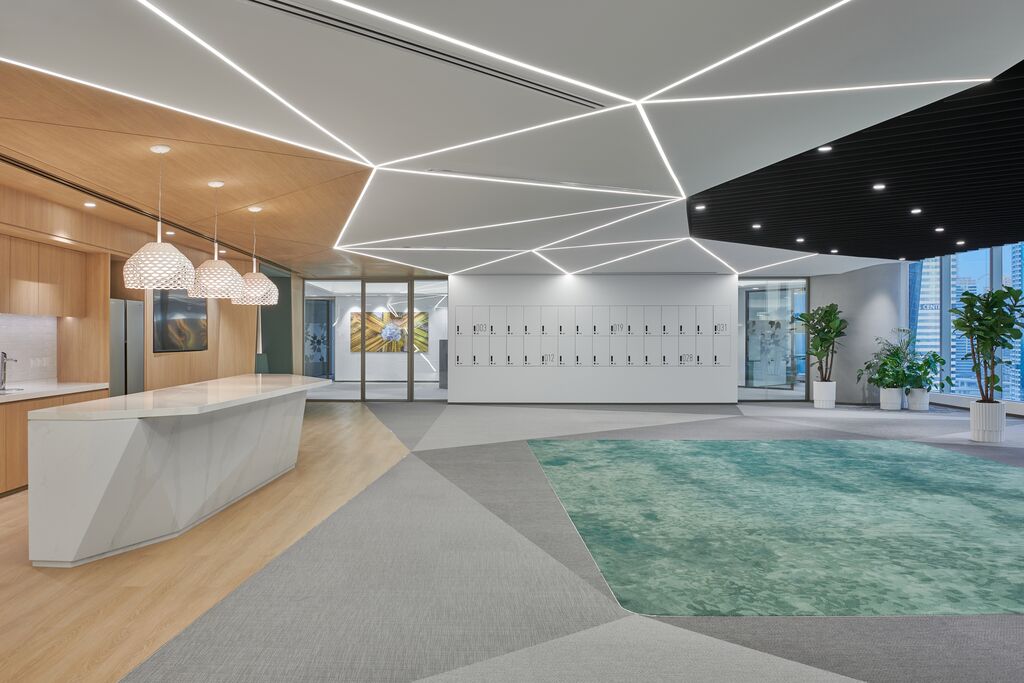Feature Image: Gemological Institute Of America (GIA), Dubai by Orbit Design Studio
Photographs by: Chris Goldstraw
Flooring is to a room what personality is to a space. It brings more meaning and character to the latter, enhancing its purpose. Simply put, flooring is an integral design element that sets the vibe or mood of a built environment. The choice of flooring material can influence the visual warmth, acoustic quality, and comfort of a space. Speaking of which, carpet tiles is a floor finish that has gained popularity in recent times. So, let’s explore more about what they have to offer.
What are Carpet Tiles?
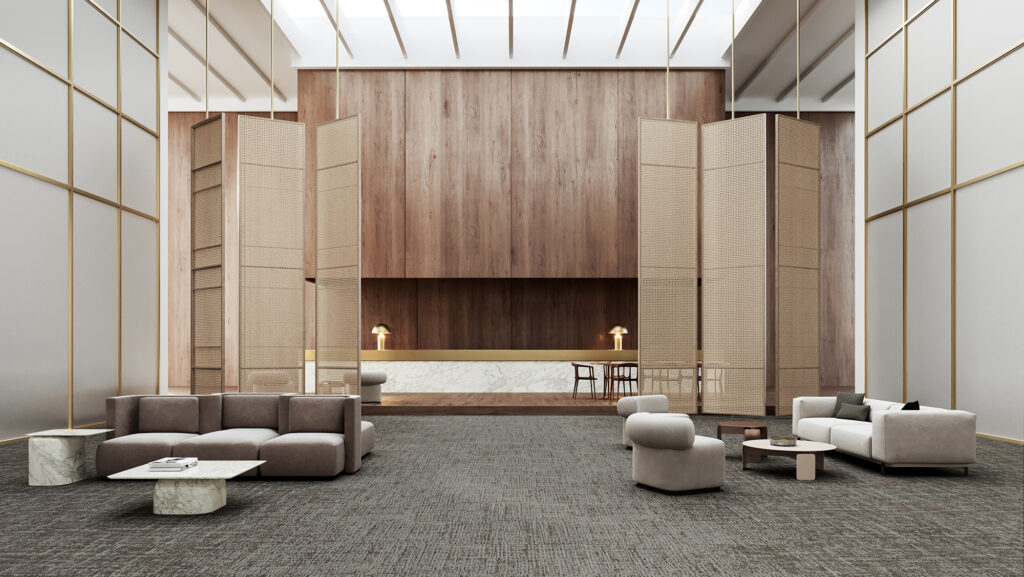
Carpet tiles, also known as modular carpets, are square sections of carpet that can be pieced together to form a larger carpeted area. These tiles come in various sizes, styles, colours, and patterns, offering versatile design possibilities for both commercial and residential spaces. One of the primary advantages of carpet tiles is their ease of installation; they can be quickly laid down with adhesive backing, making them an ideal choice for do-it-yourself projects or spaces that require rapid setup. Additionally, carpet tiles are designed to be durable and easy to maintain. If a section becomes stained or damaged, individual tiles can be replaced without disturbing the entire carpeted area, making them a cost-effective and practical flooring solution.
What are the Different Types of Backing for Carpet Tiles?
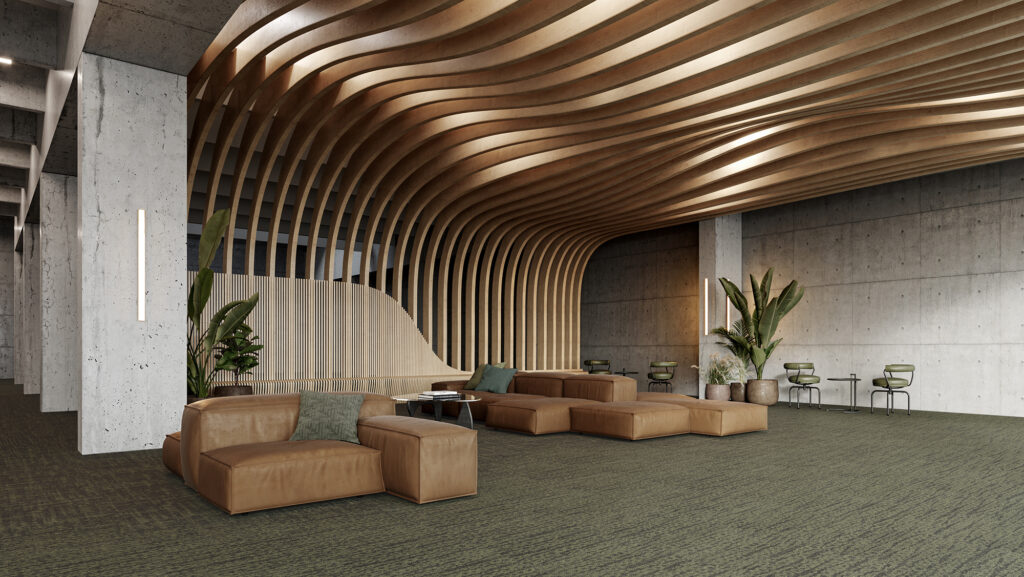
The purpose of backing in a carpet tile is to provide structural support, durability, and stability to the carpet, ensuring it maintains its shape and appearance over time. It helps protect the carpet fibres from wear and tear, thereby extending the lifespan of the carpet tiles. So, let’s explore the most widely used types of backing for carpet tiles.
Hardback Backing
Hardback backing is one of the most common types of carpet tile backing. It is typically made of vinyl or other rigid compounds that provide a firm and stable base. It is known for its durability and resistance to wear and tear, making it ideal for high-traffic areas such as offices, schools, and retail spaces. The rigidity of hardback backing ensures that the carpet tiles stay in place, maintaining a neat and uniform appearance over time. However, it offers less cushioning compared to other backing types, which might affect comfort underfoot.
Open-Cell Cushion Backing
Open-cell cushion backing is designed to provide enhanced comfort and resilience. Made from materials like polyurethane foam with an open-cell structure, this type of backing allows air and moisture to pass through, which can help prevent mould and mildew growth. The cushioning effect reduces strain on feet and legs, making it a popular choice for areas where people stand or walk for extended periods. Additionally, the flexibility of open-cell cushion backing can absorb impacts, reducing noise and contributing to a quieter environment.


From left to right: Image Source; BalaSys IT Office, Hungary by LEVEL UP Office Design; Photograph by 128histudio
Closed-Cell Cushion Backing
Closed-cell cushion backing offers a similar level of comfort to open-cell cushioning but with a denser and more impermeable structure. It is made from materials like closed-cell foam or rubber, which provide excellent support and durability. The closed-cell structure prevents water and other liquids from penetrating, making it highly resistant to spills and moisture-related damage. This makes it ideal for areas prone to spills or where moisture resistance is critical, such as kitchens, bathrooms, and basements.
Pre-Backed Backing
Pre-backed backing is designed for ease of installation. Each carpet tile comes with an adhesive layer covered by a protective film. To install, people can simply peel off the film and press the tile onto the floor. This type of backing eliminates the need for additional adhesives or tools, making it a convenient option for DIY projects or quick installations. Pre-backed backing is suitable for residential spaces like bedrooms, playrooms, and home offices, where frequent changes in decor might occur.
How to Pick the Right Carpet Tiles for a Space?
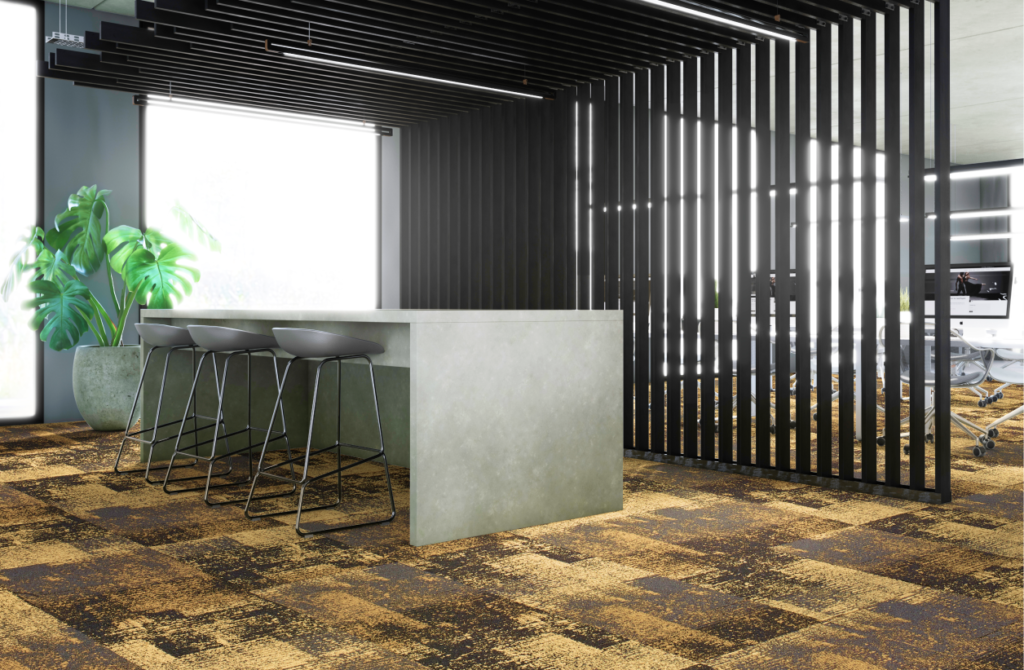
Using carpet tiles for an interior space requires a thoughtful consideration of various parameters such as the function of the room, occupancy, traffic, movement, and more. So, let’s delve further into each of the crucial aspects that should be taken into account while selecting carpet tiles.
Consider the Space and Its Use
The first step in selecting carpet tiles is understanding the nature of the space and its intended use. High-traffic areas like hallways, offices, and retail spaces require durable, stain-resistant carpet tiles that can withstand frequent use. Look for tiles with robust backing and strong fibre construction to ensure longevity. For residential spaces like living rooms and bedrooms, comfort might be a higher priority, so consider tiles with a plush texture and cushioned backing.
Evaluate Material and Durability
Carpet tiles come in various materials, each offering different levels of durability and comfort. Nylon is a popular choice for its resilience and stain resistance, making it ideal for busy areas. Polyester, on the other hand, is soft and offers vibrant colour options, suitable for less demanding environments. For eco-conscious buyers, consider carpet tiles made from recycled materials or natural fibres.
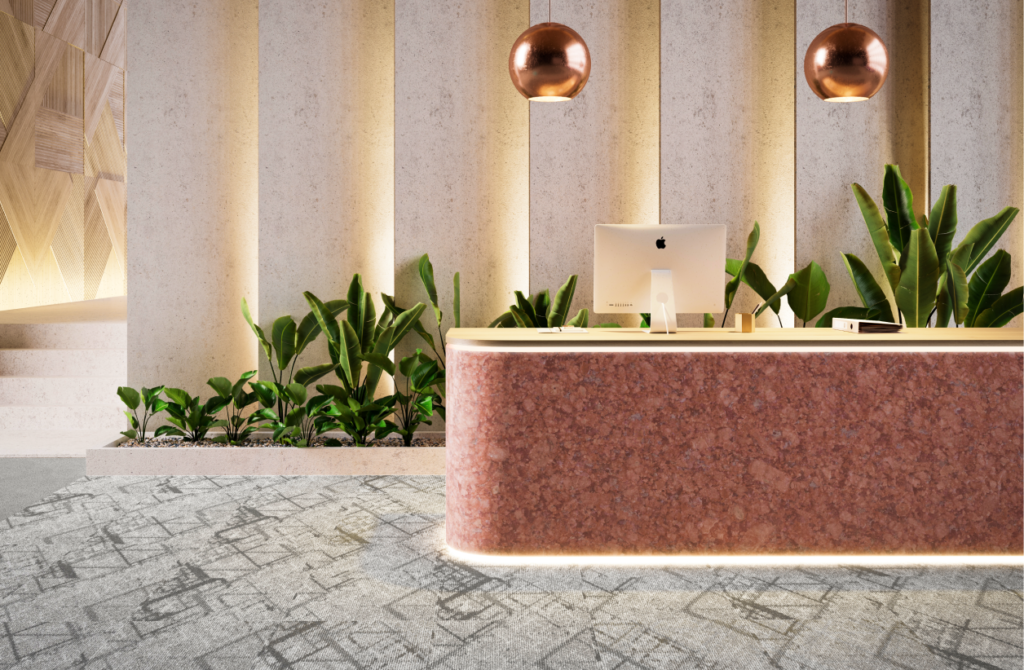
Assess the Backing
The backing of carpet tiles plays a crucial role in their performance and installation. There are several types of backing, each with unique benefits. Hardback backing provides excellent stability and is suitable for heavy traffic areas. Open-cell cushion backing offers additional comfort and improved acoustics, ideal for office environments. Closed-cell cushion backing provides moisture resistance, making it suitable for areas prone to spills. Peel and stick backing offers easy installation and is perfect for DIY projects. Understanding the advantages of each type will help you choose the best option for your space.
Design and Aesthetic
Carpet tiles are available in a wide range of colours, patterns, and textures, allowing you to create a unique look for your space. Consider the existing décor and the desired atmosphere when selecting carpet tiles. Neutral tones can create a calming, cohesive look, while bold patterns and vibrant colours can add energy and personality to a room. Mix and match different styles to create custom patterns or highlight specific areas within a larger space.
Budget Considerations
While carpet tiles can vary widely in price, it’s important to consider both the initial cost and the long-term value. Investing in high-quality, durable tiles may have a higher upfront cost but can save money in the long run by reducing the need for frequent replacements. Additionally, consider the ease of installation and maintenance costs. Some carpet tiles are designed for easy replacement of individual tiles, which can be more cost-effective than replacing an entire carpet.

